Google Analytics is a powerful and free tool that allows you to track and analyze your website traffic, user behaviour, and conversion rates. With Google Analytics, you can gain valuable insights into how users interact with your website, what pages are the most popular, and what areas of your website need improvement.
Capturing customer data through your website is an essential part of any successful digital marketing strategy. This information can help you understand who your target audience is, what they are interested in, and what they need.
By using a form, you can prompt users to provide their contact information, which can then be used to create a database of leads. The more information you collect, the more personalised your marketing campaigns can be, which leads to higher conversion rates.
Connecting your form with Google Analytics allows you to track and analyse your lead data, providing valuable insights into your marketing campaigns and website performance. With Google Analytics, you can track form submissions, monitor conversion rates, and identify which pages are most effective for lead generation.
Choose the most reliable and high-quality form solution for your Google Analytics.
Why Serviceform Dynamic form is the best for Google Analytics
- Choose from a variety of form templates or create your own using the drag-and-drop form builder.
- Create a personalised and engaging user experience with conversational forms that guide users through your website.
- Collect valuable data and insights about your customers with Serviceform's deep-usage statistics and data export options.
- We build our forms with security and reliability in mind, ensuring that your data is protected and your forms are always available.
- Serviceform Forms are designed to reduce form abandonment and increase conversion rates, helping you turn more visitors into customers.
- Serviceform Forms are optimised for fast loading times and a seamless user experience on any device.
- Get inspired with a library of over 500+ tested and proven templates, available for you to use for free.
Step 1. Create your Serviceform account
Start by creating your free Serviceform account. After that, you can generate your Serviceform pixel in the box below. To start, type your website URL and select "START NOW".

Step 2. Install the free form on your website
Using HTML
If you're a tech-savvy person or have a developer in your team, it's easy to add a Serviceform Form to your website using HTML.
To start, click on the website you’ve set up on your Serviceform account and select settings.
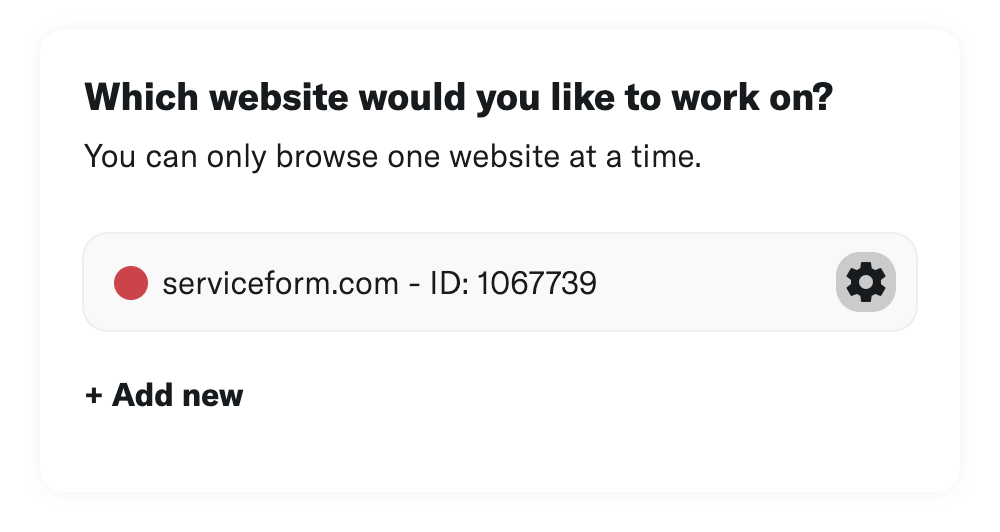
Then, copy the pixel code and paste it on the header tag section of your website.

Voila! Your website just got a lot cooler with Serviceform’s Dynamic form.
Using Google Tag Manager
No worries if HTML isn't your thing. Installing the Serviceform pixel onto your website using Google Tag Manager is easy.
Simply choose the option to install via Google Tag Manager in your Serviceform account, then copy your unique pixel code.
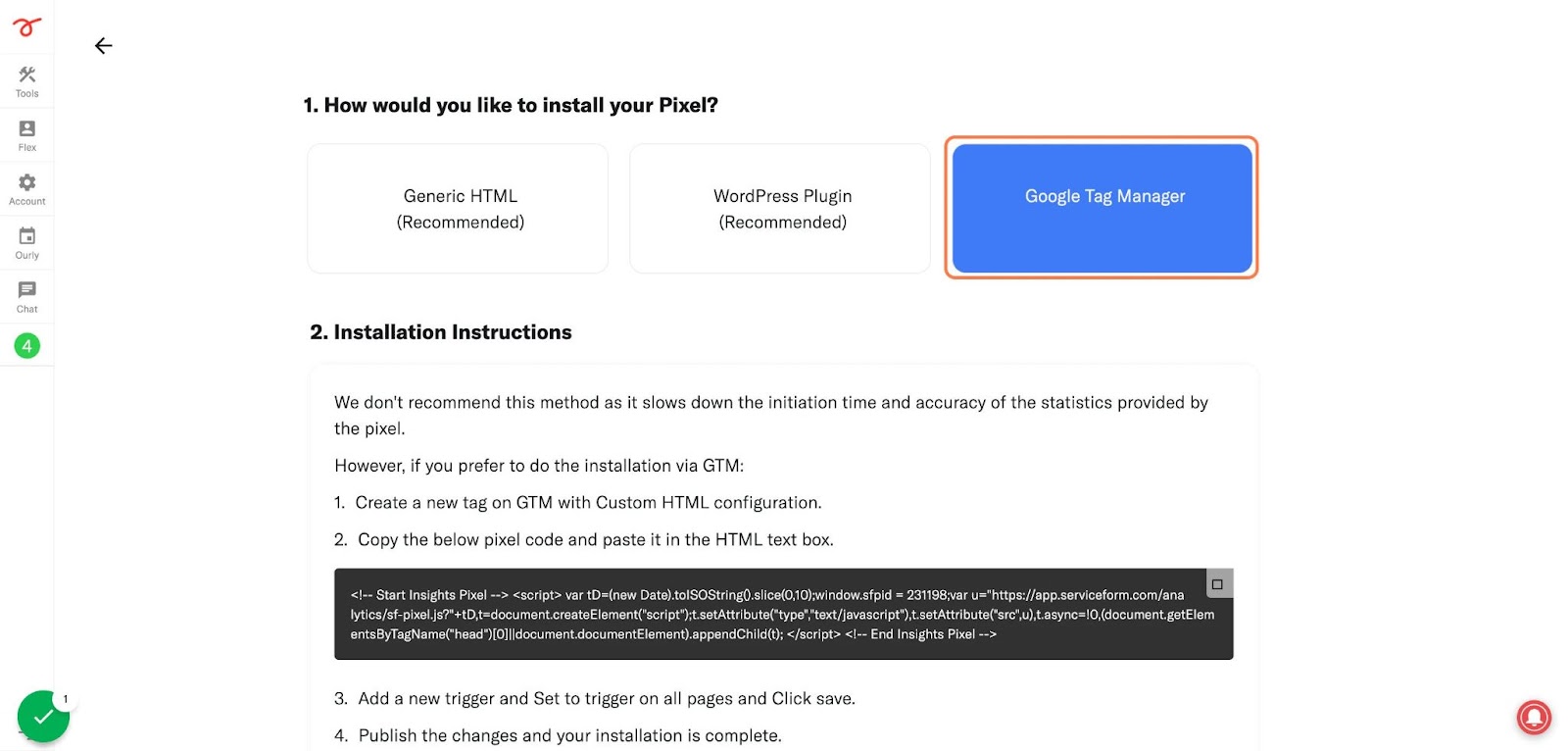
Next, head over to your Google Tag Manager account and create a new tag. Then name your tag.
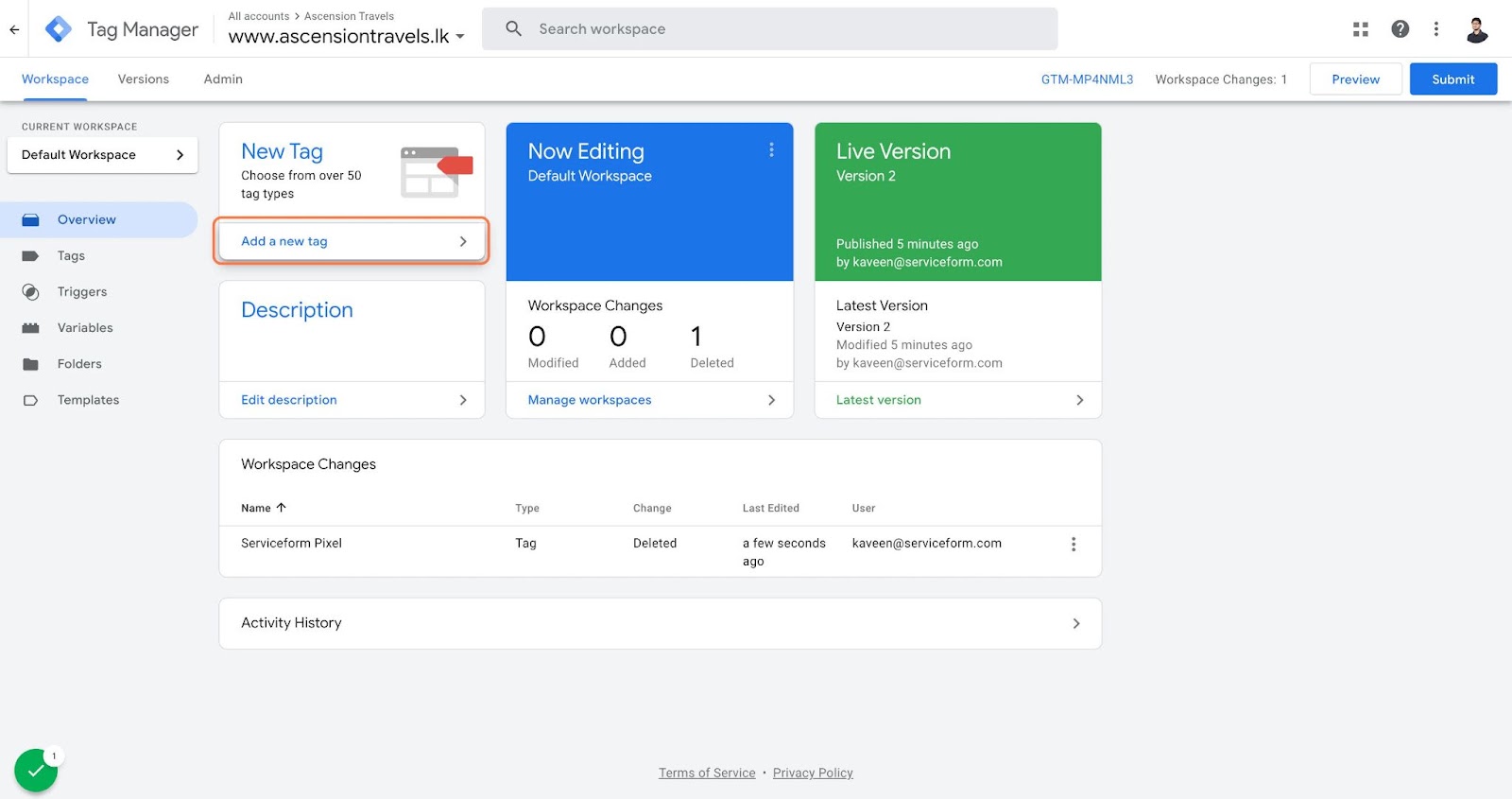
Once you've named your tag, head to the tag configuration and choose custom HTML from the drop-down menu. Then, simply paste the Serviceform pixel code you copied earlier into the code area.

Then click on ‘triggering’ and select ‘all pages.’ Then save your work and press submit. In the submission configuration screen, type ‘Adding Serviceform pixel’ into the ‘Version name’ area, and you’re all set.
Step 3. Test if your Serviceform pixel is live
You can check if your pixel is active by looking at the top right corner of your dashboard.
If you see a green circle, that means it's active and ready to go. But if you see a red circle, it means it's not active yet. No worries, just give it a quick check and get it up and running in no time.

Step 4. Connect your form with Google Analytics
Bringing your Serviceform Form and Google Analytics together has never been a smoother ride. With just a few clicks, you'll be able to send your "Chat started" and "Chat submitted" events with ease.
To activate this feature, go to the settings in the form builder. Within the settings section, select " and turn on the toggle labelled "Default GA push."
Normally this is enabled by default.

Further, you can customise the data layer names.

To use these in Google Tag Manager, you must add a “Trigger” and a “Tag”.
Simply set the event name to "Serviceform" and set the trigger to activate on "All Custom Events". And just like that, all of your Serviceform events will be starting this trigger, ready to be brought to life in Google Tag Manager.
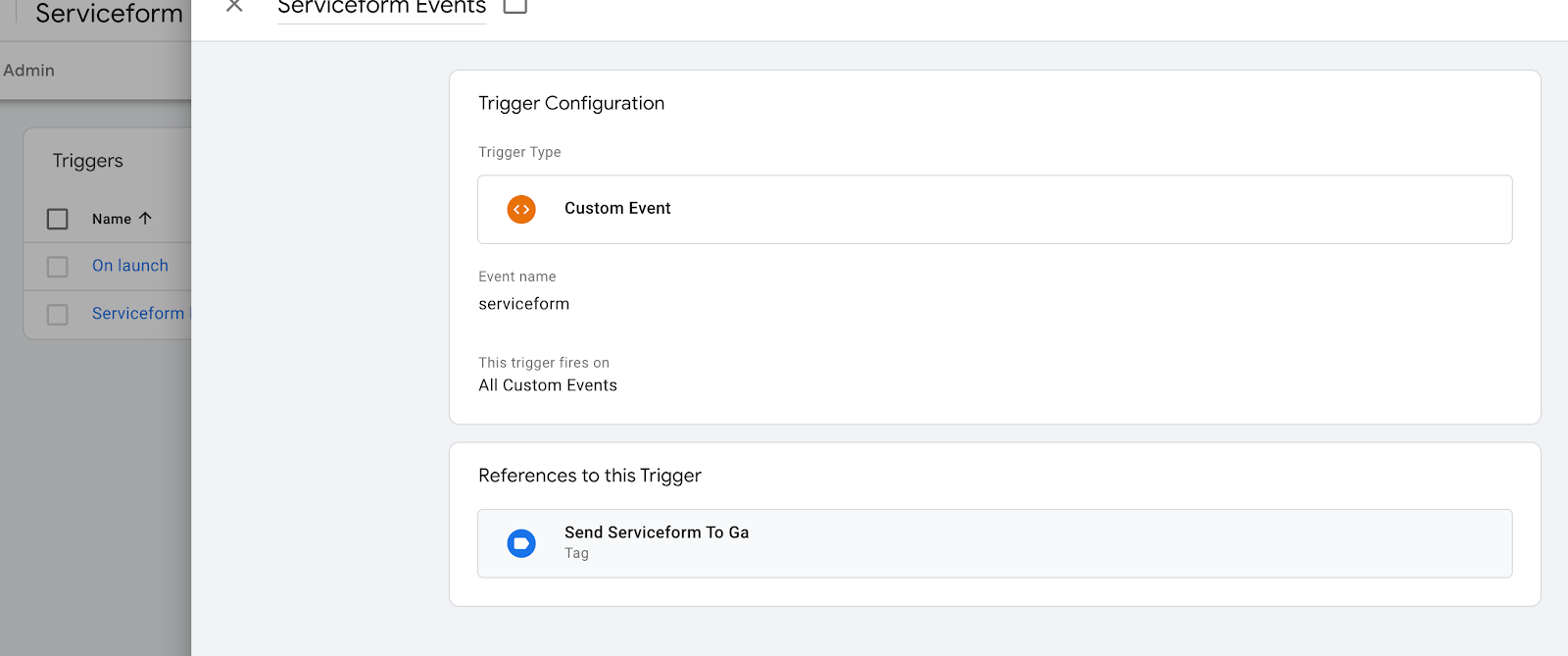
Select the "Google Analytics: GA4 Event" tag type and add your configuration tag or measurement ID (which can be found in your GA 4 admin data streams website settings).
Then, customise the event parameters to fit your specific needs. In our example, we use the dynamic event name {{DLV - chatProgress}} which can be chat started, chat complete, or redirect, based on the user's trigger.

Double-check that your data comes through to Google Analytics as wanted.
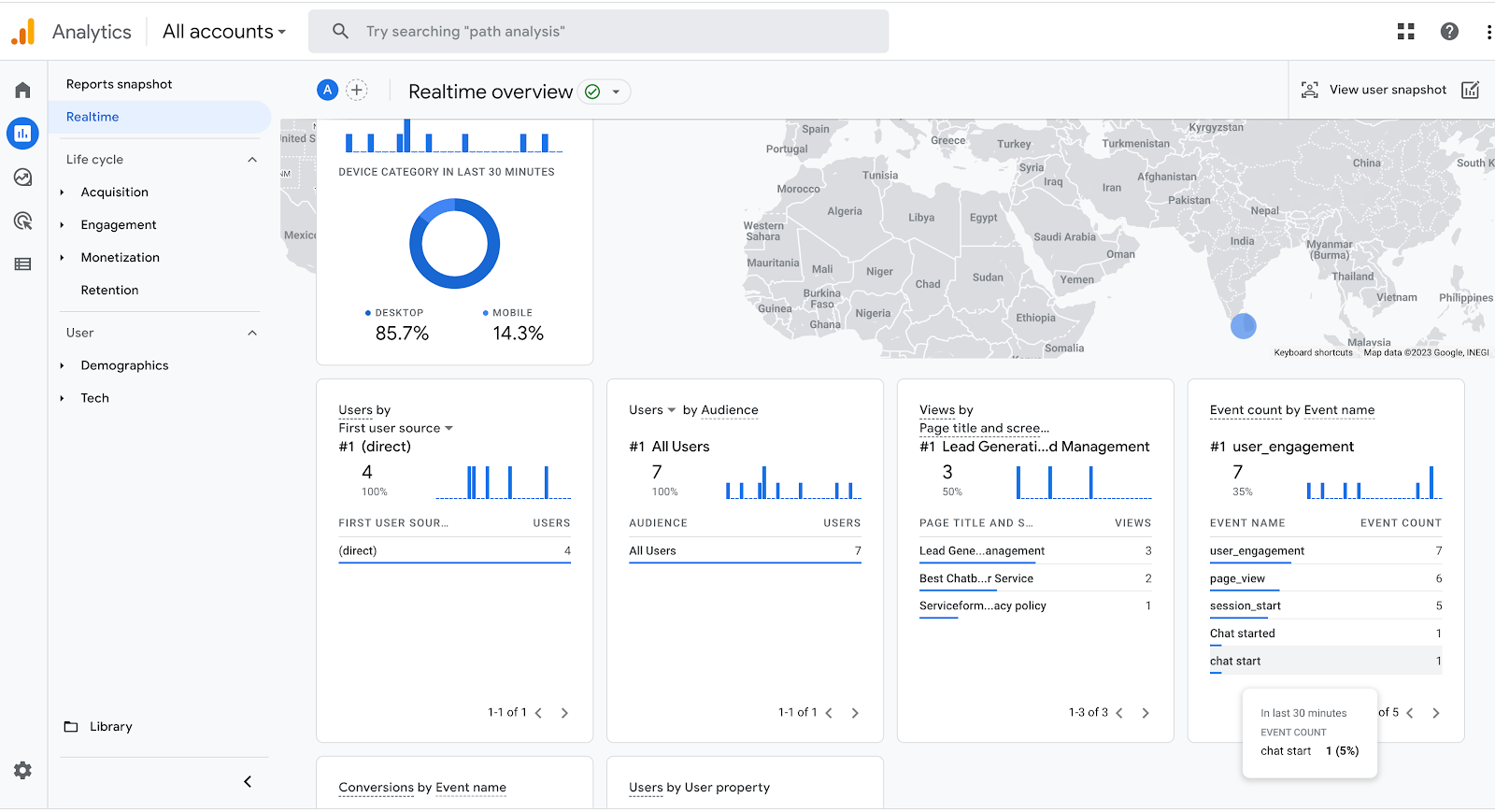
The beauty of Google Tag Manager is that you can take your Serviceform data to the next level with customisations.
For example, you could enhance your event naming by transforming it from "Event name: Serviceform {{DLV - chatProgress}}" to something more unique and distinguishable from your other events.
Great job! You're all set.
From now on, every time a customer finishes interacting with the form and submits their details, this information will be automatically recorded in your Google Analytics account.









































.png)





.png)


















